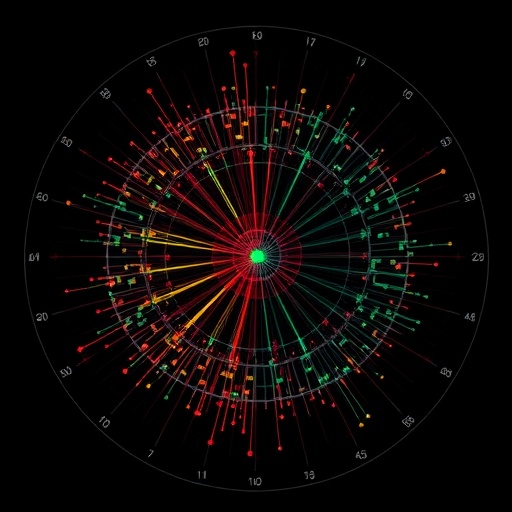During the COVID-19 pandemic, food systems faced disruptions from staff shortages and supply chain issues. Now, a Virginia Tech researcher is assisting with efforts to help plants themselves from facing their own pandemic.
Just like human diseases, plant diseases don’t have arbitrary boundaries. These diseases don’t stop at a border crossing or a port of entry. That’s why plant disease surveillance, improved plant disease detection systems, and predictive plant disease modeling – integrated at the global scale – are necessary to mitigate future plant disease outbreaks and protect the global food supply, according to a team of researchers in a new commentary published in “Proceedings of the National Academy of Sciences.”
“The manuscript offers a unique and timely perspective on plant diseases, particularly in the context of the COVID-19 pandemic,” said David Schmale, a co-author on the paper and a professor in the Virginia Tech School of Plant and Environmental Sciences in the College of Agriculture and Life Sciences. “What would happen if the world lost a staple crop, such as wheat, to a plant disease pandemic? The manuscript considers current tools and capabilities in the context of climate change and growing human populations. There is a clear opportunity to bring researchers together that work on the epidemiology of human diseases and plant diseases.”
Schmale was a part of a team of experts, led by North Carolina State University, that met in Raleigh, North Carolina, a few years ago to discuss plant diseases and their impacts on food security. This manuscript is the result of that meeting, and many of the experts that were there in Raleigh are co-authors on the paper.
The idea is to “detect these plant disease outbreak sources early and stop the spread before it becomes a pandemic,” said Jean Ristaino, William Neal Reynolds Distinguished Professor of Plant Pathology at North Carolina State University and the paper’s lead author. Once an epidemic occurs, it is difficult to control, Ristaino said, likening the effort to the one undertaken to stop the spread of COVID-19.
Ristaino said that the efforts from a wide range of scholars – so-called convergence science – are needed to prevent plant disease pandemics. That means economists, engineers, crop scientists, crop disease specialists, geneticists, geographers, data analysts, statisticians, and others working together to protect crops, the farmers growing crops, and the people fed by those crops.
While some diseases are already under some sort of global surveillance – such as wheat rust and late blight, an important pathogen that affects potatoes and caused the Irish Potato Famine – other crop diseases are not routinely monitored.
A new strain of the fungal pathogen that causes wheat rust turned up in 1999 (Ug99) and has moved quickly throughout Africa, recently flying over the Red Sea into Yemen.
Globalization of food trade is another factor for the jump of plant pathogens and further risks a food supply already strained by a growing world population and human diseases.
Research is underway to model the risk of plant-pathogen spread and help predict and then prevent outbreaks, the researchers report in the paper. Modeling and forecasting disease spread can help mobilize mitigation strategies more precisely to stop these plant pandemics.
“Our work extends the concept of One Health to plant disease pandemics and the threat they pose to global food security,” Schmale said. “People, domestic animals, and plants are all tightly connected through each other and the environments that they share. These connections are changing, and we must address the threat of high-risk plant pathogens to staple food crops to safeguard global food security.”
###
Media Contact
Max Esterhuizen
[email protected]
Original Source
https:/
Related Journal Article
http://dx.






